Looking for a new digital agency that can accelerate your B2B lead generation results? Schedule a free marketing evaluation with our team to meet the right agencies fast. It’s fast, free, and we get it right.
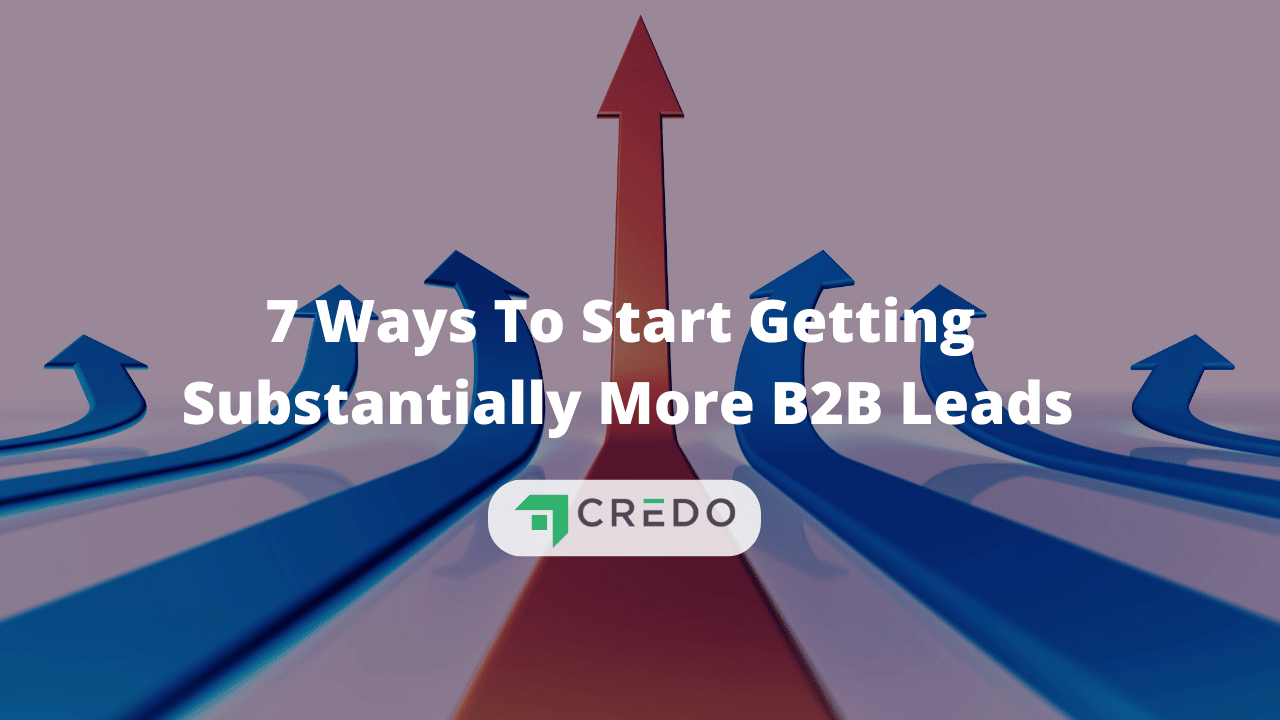
As a B2B business, your business lives and dies based on the leads you are getting. You need leads coming in so that you can put them through your sales cycle and turn them into clients.
You’re probably inundated, as a B2B marketer, by people offering you “leads” as well. They’re saying something like 1,000 leads for $200.
In reality, what you’ll get is a list of email addresses and first names that they scraped from LinkedIn. If you have a great outbound strategy you might be able to turn that into some business. If you don’t then you’re going to be wasting a lot of time and money.
So how do we level up our game and drive both more and better B2B leads?
First, we need to define what a “lead” is in B2B, then we can talk about how to get more of them.
Table of Contents
What is a B2B “lead”?
In the B2B world everyone is talking about “leads” and trying to sell them to you, but what is a lead?
There are three levels of leads:
- A “lead”, which is usually just an email and name and maybe some other information. This is usually what someone is trying to sell you;
- A marketing qualified lead (MQL), meaning they have taken specific steps on your site such as viewing specific pages and downloading content;
- A sales-qualified lead (SQL) has been contacted by a salesperson and verified to be an actual potential customer.
A B2B “lead” can come in many forms:
- Physical form, like a business card that you then input into your CRM and then follow up with;
- Email address, either to a piece of valuable content or directly to contact you;
As B2B marketers, we talk about leads but what we really should talk about are MQLs and SQLs, These are the ones that make us money, while those that do not become customers are simply taking up space on our email lists.
These are:
- Form submits;
- Physical phone call or other contact.
You can talk all you want about how a B2B “lead” “might” become a real MQL someday or that they “could” refer a friend to you, but at the end of the day if they are not buying then they are not your customer and they’re costing you money by taking up space in your CRM (you have one of those, right?)
You need to focus your time on three things:
- Moving subscribers (“leads”) from being a subscriber to being an MQL
- Converting more MQLs into SQLs and then closing them into customers;
- Acquiring MORE subscribers who are ready to become MQLs and then SQLs.
Don’t get caught in the trap of optimizing minimal traffic to try to gain 1-2 more leads.
For most businesses, the highest leverage thing you can do is get more traffic that you can then optimize and turn into subscribers and then MQLs to SQLs.
How to Get More Marketing-qualified Leads
Getting more marketing-qualified leads is the goal, so how do you get there?
These are the strategies I and many others have used to drive very real results for our businesses and clients. Do remember that the most effective strategy for driving more leads involves the full marketing funnel. Simply implementing one or two of these without a view toward measuring and optimizing your conversion flow will mean that you do not see the results that you could.
Here are some strategies to implement to get more MQLs.
1) Increase your keyword spread and traffic
If you’re struggling to get enough B2B leads, then the first place to look is at your traffic.
How well are you ranking for the terms you are optimized towards for SEO, and how effective are your paid marketing campaigns in bringing qualified users to your site?
Using a tool like SEMrush (click here for a free 7 day trial), you can enter your domain and see the keywords your website ranks for as well as their position and monthly search volume.

Then use their Keyword Gap tool to compare your site against your competitor’s to uncover more keywords that you should be targeting with specific pages and/or content:

From here you can use a tool like SimilarWeb to understand where your competitors are getting their potentially converting traffic as well:
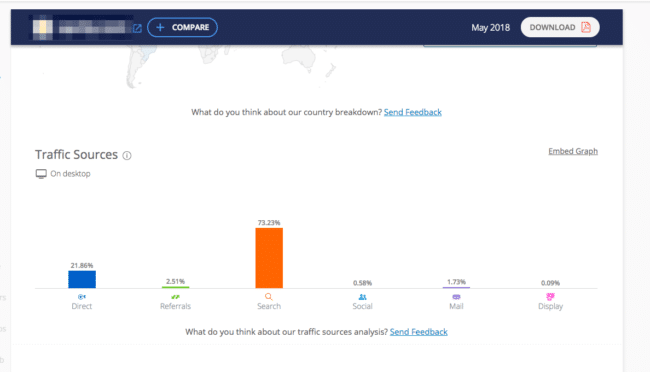
Now you get to put together a plan to execute and build that content and those links and those relationships that will drive you more traffic.
For the vast majority of businesses not getting enough leads, you need a bigger audience.
2) Create content upgrades on your top content
The next way to convert your newly acquired B2B audience to initial leads (not yet MQLs though!) is by offering them something of value that lets them take their newly acquired knowledge further.
I’m not talking about a “sign up to our RSS feed” or “get our weekly newsletter” calls to action. No one wants to sign up for those.
Instead, give them something of immense value that answers their question “Ok, how do I go deeper on this now?“
One of the highest leverage things you can do is go to Google Analytics and find your most trafficked pieces of content (Behavior > All page in GA):
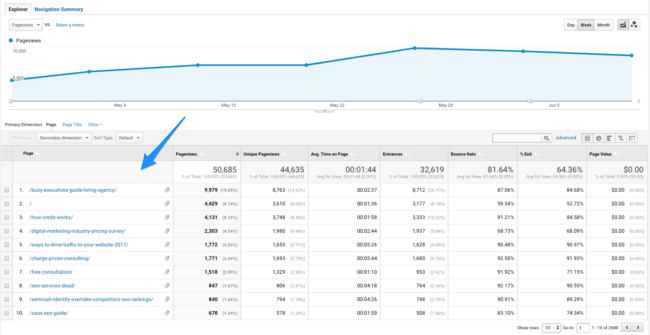
Then, find the ones that do not have a tailored call to action on them. This is your opportunity.
Now take those into a spreadsheet and label their topic, then in the next column define the piece of content that you can create in under an hour.
Over the next five days, take an hour each day to create that piece of content. It doesn’t have to be amazingly formatted and designed (though it can be if that’s how you roll), but get it done in an hour. Then save it as a PDF, put it on Dropbox or somewhere that it can be downloaded, and implement an email capture like so:
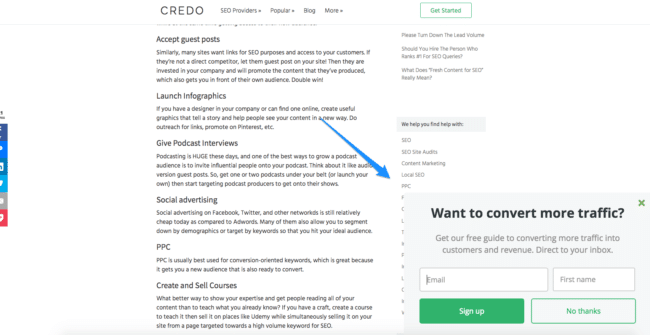
Don’t get caught up in whether you should implement it as a slider, a layover, or a welcome mat. Using a tool like Sumo on WordPress, you can make these changes easily.
What is important is implementing something so that you can establish a base and grow from there.
3) Implement email captures for long dwell times on a page
One of my favorite strategies for acquiring new email addresses is to target those on your conversion pages who are staying there for a longer-than-average amount of time. You can implement a layover/upgrade that helps them get more information so that then they can feel confident contacting you.
The psychology here is interesting but straightforward.
If someone spends more time on your page than average, then they are highly engaged but likely to have more questions, thus they are reading longer.
If you can provide them something that gives them answers to their questions (likely one of your most frequently asked questions) and at the same time capture their email address, that is a win for your business.
You do this on your conversion pages and informational pages to help the visitor go deeper. You probably know offhand your conversion and informational pages, but do you know the average time on those pages?
Look in Analytics, then set your upgrade to happen about two-thirds of the way through that. If that drops your conversions, then move it to equal an average time on the page.
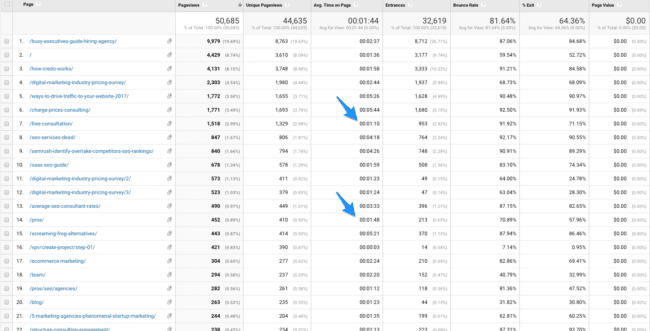
Keep adjusting until it improves your funnel.
4) Implement lead scoring based on user behavior
Once you’ve done the above three, or are continually working on them to improve volume and efficiency, you’ll be generating email addresses and contacts left and right.
Maybe you will even hit the point where you are too busy and can’t handle any more business, which means you need to hire or improve processes (or both) to handle more leads.
But what then?
A few months ago I realized that I was getting 400-600 new email addresses every month.
Woah. That is a lot of new leads into our funnel.
But they were just piping into my CRM and my ESP and I wasn’t doing anything with them beyond automated drip email follow-ups. There was no personal touch and I didn’t know when someone had also looked at pricing or conversion pages but not converted.
So I did three specific things:
- Started lead scoring within Drip (my ESP) to alert me when an email subscriber did certain actions and was assigned a score above a threshold, which then tagged them as an MQL;
- Starting piping those MQLs into Slack using Zapier so that I could see them as they appeared;
- Hired a person in a Sales Development Representative (SDR) role to personally reach out to these MQLs.
This has made a world of difference.
First, lead scoring allows me to define what actions a user takes and a numeric score to apply to them. Once they have done these specific actions, they are labeled an MQL and I receive an email.
Here’s part of my lead scoring system:
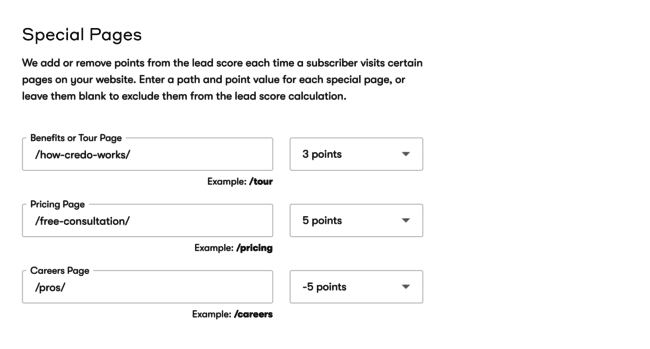
And here is an email I receive when someone becomes an MQL:

We can reach out directly to them (or rather, my SDR can) to see what they are trying to solve and then try to get a call scheduled with me to discuss their needs.
One of the best things I’ve done recently is sending all of our new email subscribers to Slack.
I do need to take this further and also create a separate Slack channel for leads that become MQLs, but this gives me good visibility into if our funnels are working and who is signing up.
My SDR sees this as well and can reach out quickly to good B2B-focused leads (mainly, ones that have a business email). There are many ways to improve this, but sending them to Slack from Drip using Zapier is one of the highest-value things I’ve done in the last month:
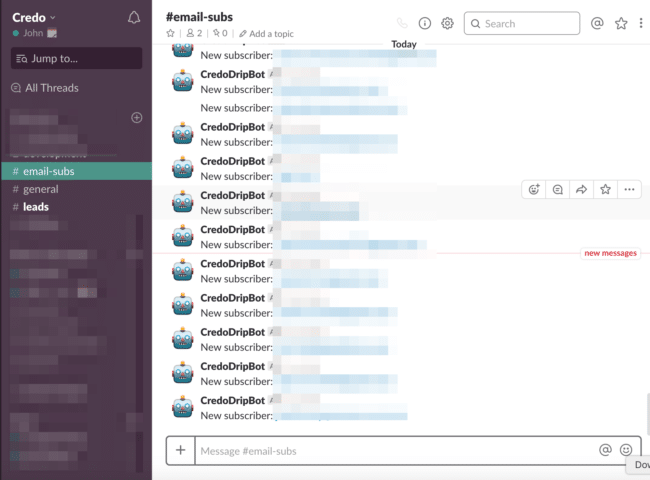
5) Break forms into multiple pages and elongate your B2B-focused funnel
One thing I have tested a lot is my main form configuration, which currently looks like this:
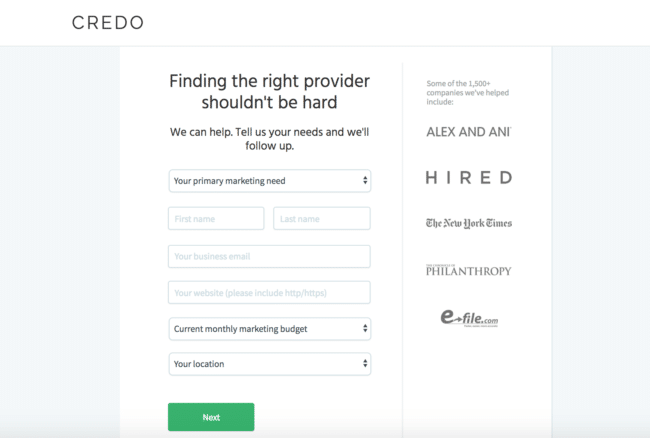
Over the last few years, I’ve played with everything from an 8-step form, one for each required bit of information, as well to one long page with 15+ fields to fill out. I finally arrived at this shorter form as the initial conversion for what is a mostly B2B business. I’ve done all of this with Gravity Forms.
Read more: Top of Funnel Digital Tactics For Real Estate And More
Based on the answers provided within this form, I send the person to different locations to do something. Some are asked to schedule a call, others are asked to give us more information, and still, others tell them that we will not be able to help for whatever reason (often because they are located somewhere that we do not serve).
By changing the amount of information I ask for upfront as well as adding trust signals (like the Rapid SSL logo and a testimonial) I’ve been able to dramatically (at least 40%) increase the number of form submissions.
6) Clarify your offer with video
One thing I have not done widely yet (but will very soon) is use video to clarify what exactly you offer.
You can do this on your homepage like many companies or even within your conversion funnel on your video pitch. People like Todd Herman use this to their advantage, using video case studies to help with conversion:

Some sites like InDinero have used videos on their homepage to dramatically improve their conversions. They saw almost double the number of conversions by implementing a video on their homepage. In fact, they now push it hard on their Get Started page:
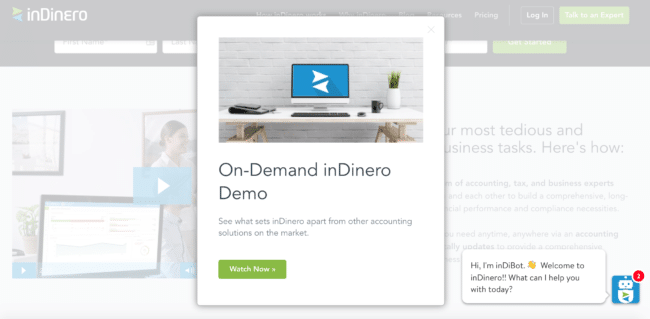
7) Drive targeted paid traffic
Once you have your content upgrades in place and have improved your conversion rates with better forms and possibly video, you may be ready to do some targeted paid advertising through channels like Facebook and Quora to drive email signups that you can then warm up and turn into MQLs and then SQLs.
This strategy involves more education email drips and better segmentation of your list automatically based on user interaction with your content and your site, but it can show huge returns once you are ready.
Ready to create your B2B lead magnet? Find your all-star digital agency today. It’s fast, free, and we get it right.
Some links contained within this article are affiliate links, which means that if you click it and buy the product we may receive a commission. We only recommend products that we ourselves use constantly and love.

